Yes, you and the kids can go dig for dinosaurs…and we did it with PaleoAdventures!
Yes, you and the kids can go dig for dinosaurs…and you can do it alongside the paleontologist who discovered Big John, the world’s largest triceratops, the dinosaur on display at Glazer Children’s Museum!
Something pretty incredible happens when you swipe away the last bits of prehistoric dirt and become the living thing in 66 million years to lay eyes on a prehistoric creature's fossilized bone. It’s humbling because it’s tangible proof we weren’t the first living things to dominate our planet, and it’s proof of how delicate life really is.
Walter Stein, the paleontologist who discovered Big John, the triceratops, and owner of PaleoAdventures fossil digs in South Dakota, tells us it’s the reason why paleontology is so important: to understand life here on earth and even our future as a species.
It’s also a really cool way to get kids excited about STEAM, since paleontology needs every component of STEAM to function.
Related: Where to see dinosaurs in Tampa Bay
We first met Stein two years ago during the unveiling of the Big John exhibit at the Glazer Children’s Museum here in Tampa. When I found out he also runs PaleoAdventures dinosaur dig tours in addition to the new Dinosaurs of Hell Creek Museum in Belle Fourche, South Dakota, I knew we were about to add a new adventure to our list.
Our good friend, Grayson Kamm, who is on the board of the Glazer Children’s Museum, and his wife, Cathy, decided to embark on this unique adventure with us to find out what it’s like to be a paleontologist. So we all flew our kids out to South Dakota over the summer, where we got to set foot in an area Big John once roamed millions of years ago.
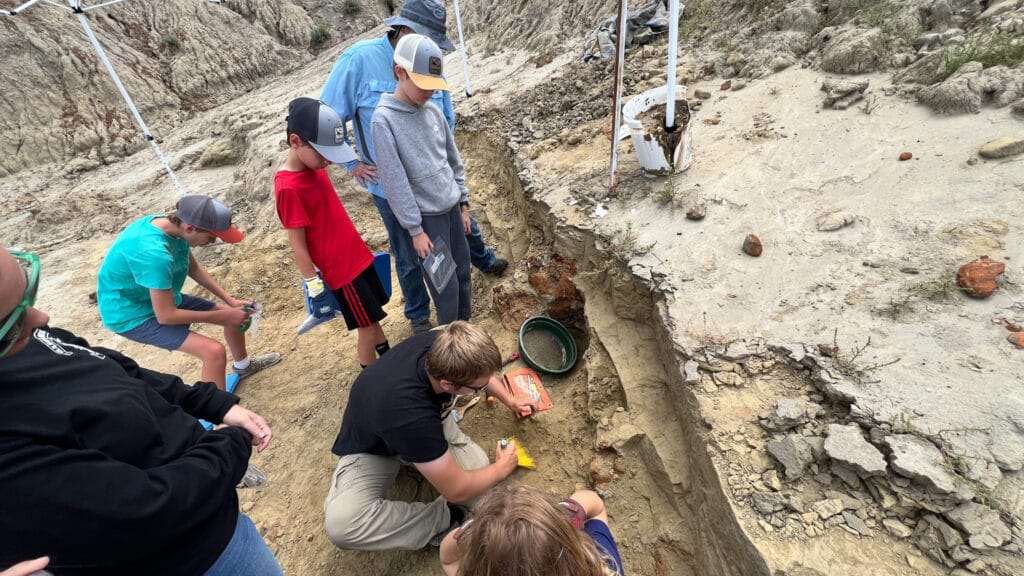
We learned that paleontology is hard work, and while there was no guarantee we’d find anything, everyone in our group did manage to make some discoveries, including lots of triceratops spitter teeth, fish scales, bits of turtle shell, and yes…even dinosaur bones.
We couldn’t keep the scientifically significant finds, but our names will be attached to each piece, and we have the option to purchase commercially significant bones once they are studied. But we did get to bring home a lot of cool finds.
Before we left for Florida, we caught up with Stein once again to talk about the importance of encouraging the study of paleontology and what he’s working on next.
LB: It’s pretty crazy to think that back during Big John’s time, where we are standing now, in South Dakota, it was a lot like Florida!
WS: The Hell Creek formation was along a warm subtropical coastline. It was dotted with swamps, rivers, and estuaries. It would have had a similar climate to North Florida, Texas, the coast of the Carolinas, and the coast of Georgia. The dinosaurs migrated up and down those river systems.
LB: It really is incredible, as we look around your museum, that even though you and your team have found numerous dinosaur fossils, fossilization is still incredibly rare. The fossils we’re finding just mean the dinosaurs and other living creatures happened to be at the right place at the right time.
WS: Oh, absolutely. Yeah, fossilization is a very rare process. To get a fossil, it has to be buried fast. In the Hell Creek Formation, it was those rivers and monsoonal-type events that would create flooding events that would trigger the burial of their skeletons.
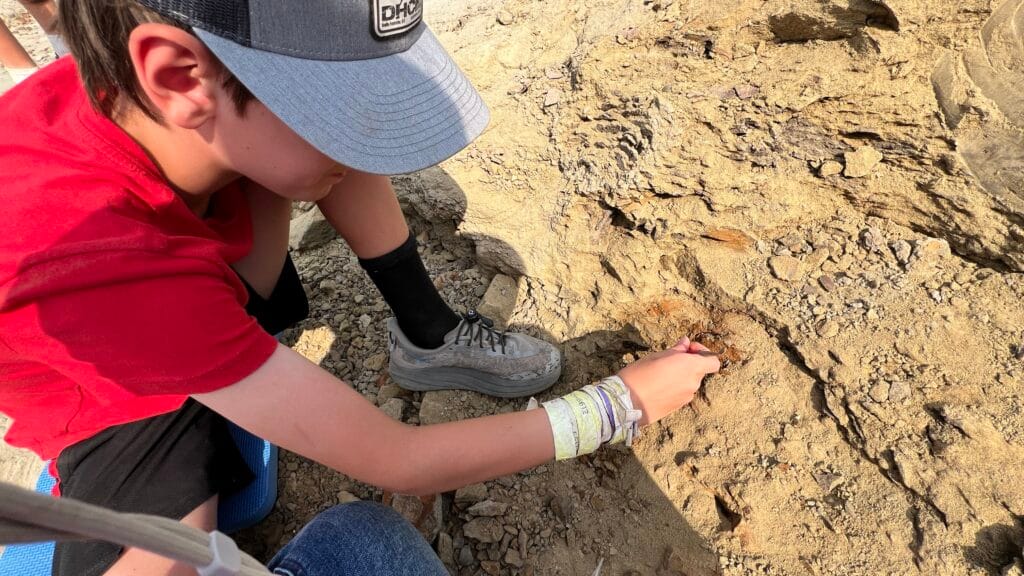
LB: Why is it important to you to give families the opportunity to experience these digs like a real paleontologist?
WS: The sense of adventure, the sense of discovery just isn't really around much these days anymore. What paleontology offers is that you're going out and digging, something pops out of that wall, you're literally the first to actually lay eyes on it, ever.
It's the first time the sun has hit it in 66 million years. So, that joy of discovery is something we provide these kids.
LB: One thing that was eye-opening for us was how hard it is to do this work and how much time it takes to recover these fossils. And how delicate they are.
WS: It’s one of those experiences you don't really appreciate until you get out there. All the scientific documentation that goes in, the mapping, the logging, the photographing, the GPSing, the stratigraphy, and the geology work. A lot of people are surprised at that.
And a lot of the stuff that we're finding is scientifically significant. Some of them are very rare pieces. Something like this, that was found by one of your diggers.
This is a Thescelosaurus femur. It's not 100 % complete. We're going to have to do some lab work on this. It's going to take some time to prepare this and clean it up, but overall, I think it's going to look very nice. And that was once the right leg from a Thescelosaurus neglectus, a dinosaur that was kind of like the deer of the Cretaceous.
These were probably quite common back in the day. Big John would have had lots of these running around him when the triceratops herds were going through.
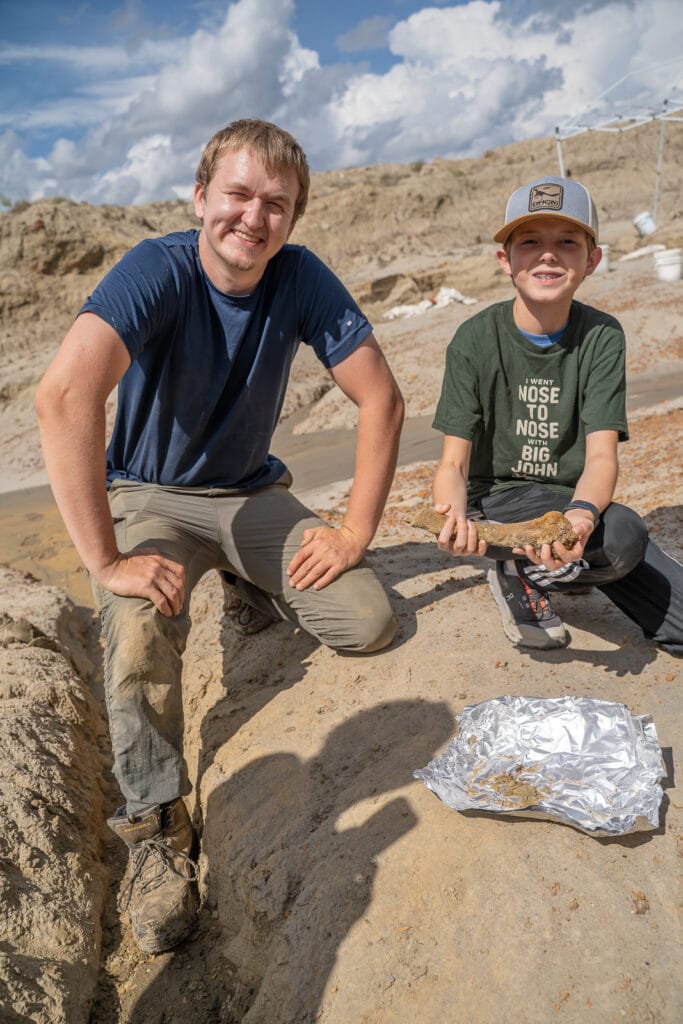
LB: And what was cool was we really weren’t that far away from where Big John was found, and potentially even where he probably hung out, 66 million.
WS: Yeah, that's true. Where we were digging wasn't that far. It's on a similar stratigraphic level, so age is pretty close. And I think it's about 16, 17 miles from where Big John was found.
LB: That's amazing. Why is it so important that we inspire the next generation of paleontologists?
WS: Paleontology is a wonderful way to get kids involved in all kinds of scientific disciplines, from engineering to mathematics. So that alone is a reason to study it.
The second reason I would say is that these animals were extraordinarily successful. For over 160 million years, they dominated the surface of the planet, and they were wiped out in the blink of an eye, literally overnight. And that process of extinction, in order to understand that, you really have to dig into paleontology.
If we want to preserve our own species and all the other animals that are around us today, we have to understand the processes of evolution, of extinction, how changing ecosystems and environments affect populations, and, really, the only way to do that is by looking at the long term.
The wonderful thing about paleontology is that we can look at Triceratops over two million years and see how the changing of that environment, the changing of interactions with other animals coming in, migrating in, how that affects that population.
LB: And for kids who are interested in paleontology, what's your advice? And, we think bringing their kids out here to dig with you is a must-do!
WS: Oh, of course, you gotta come out here and visit us. But really, the best advice I would say is never give up. There are only about three thousand professional academic paleontologist jobs in the United States and Canada, so it's a very hard field to get into. It doesn’t pay very well.
A lot of museums know that people love it, and they realize that you can get a lot of volunteers out there. But if it's really in your heart that that's what you want to do, never give up.
Some other bits of advice: take lots of art classes. Art is very important. Creative writing is very important for paleontology, mathematics, and statistics.
Learning how to do fossil prep, for example, takes an artist's skill. You have to have patience, you have to understand how to sculpt the missing pieces.
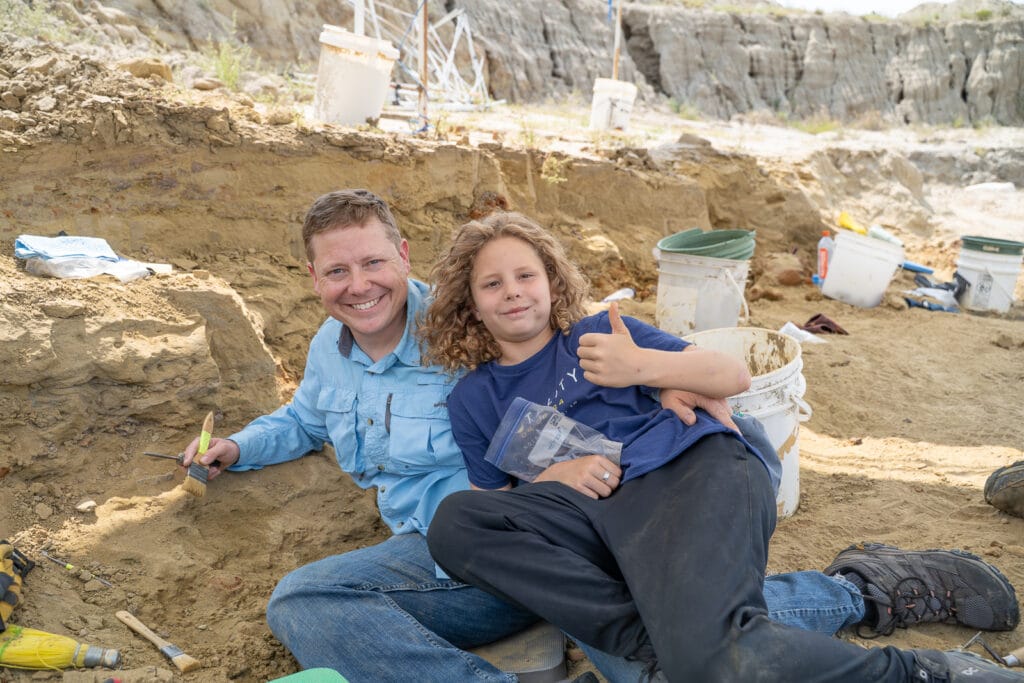
LB: Yeah, patience is key! One thing that really struck me, especially with my own kids, is that they live in a world of instant gratification. And this is something that is teaching them perseverance and patience, like you said, never give up, because this isn’t instant gratification. They have to work for it.
WS: No, this is definitely hard work. Fossils don't just pop out of the ground in one piece. Many times, it requires a lot of work to put them back together again. There's a giant jigsaw puzzle, and you're not even sure if you have all the pieces to that puzzle. So it's not instinct gratification. It is a ton of work.
But the reward is that by the end of it, you have saved and preserved something that is completely unique.
LB: Speaking of preserving something, you've got a few dinosaurs that are almost ready for sale here.
WS: We're currently working on one partial Tyrannosaurus Rex called Leonard. We have five partial Triceratops skeletons.
One is called Miss Rene. This was named for John Ryder and Rene Weiner. They were a married couple. John passed away, unfortunately, so Big John is named after him, but his wife, Rene, is still around; she's still out digging, hanging out with us. The Miss Rene Triceratops skeleton is about 40 % complete, and we're going to try to put that one together this year.
LB: Do you think there's more to find, or are you ready to start constructing Miss Rene?
WS: We're ready to start constructing. I'm going to go back out and dig around a little bit more and make sure we’ve got everything. But yeah, we're hoping that we'll be able to composite a whole skeleton together.
And when you come back here in a couple more years, Miss Rene is gonna be right there in the middle of the museum, inspiring the next generation of paleontologists, or we might put her up for auction and help pay for this new museum.
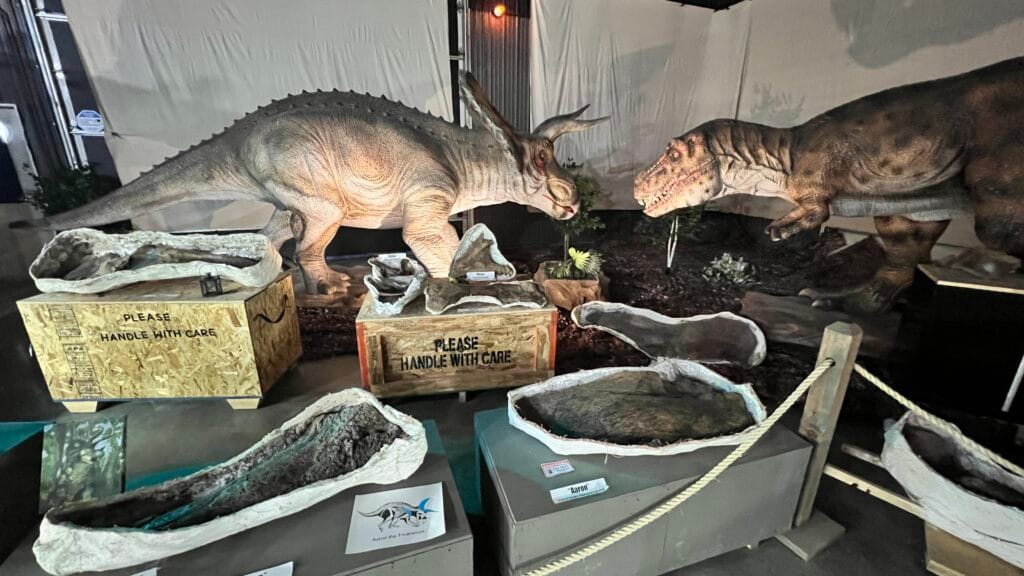
PLANNING YOUR DINOSAUR DIG TRIP IN SOUTH DAKOTA:
There’s more to do in South Dakota than you may think!
Book Your Dig: Check out paleoadventures.com, where 2026 summer tour dates will be posted in early 2026. Dates book up fast, even though Stein doubled tour capacity this year.
Getting There: Our families flew into Rapid City Regional Airport and rented 4×4 vehicles for the drive out to the dig site. It’s then a 55-minute drive to Belle Fourche.
Where to Stay: You meet daily at the Dinosaurs of Hell Creek Museum in Belle Fourche before driving out to the dig site. We stayed in nearby Spearfish. The Sturgis Motorcycle Rally was going on at the same time, so many hotels were booked.
Other Things to Do: I was surprised at the number of attractions in this part of South Dakota. We made a stop at Mount Rushmore, which is surrounded by other family-friendly attractions like Bear Country and Black Hills Reptile Gardens.
The Wild West town of Deadwood is a must-visit, where you can also pan for gold at the Broken Boot Gold Mine. For a unique photo, stop by the Geographic Center of the Nation monument at the Tri-State Museum and Visitor’s Center in Belle Fourche!
Other unique attractions to visit in Rapid City when you land or wait for your flight home: Storybook Island and Dinosaur Park, a free roadside attraction since 1936! Devil’s Tower National Monument is also about an hour away.


